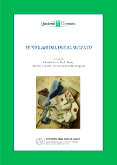
Pubblicato 22.12.2018
Parole chiave
- Epistolario volgare,
- burlevole cifra,
- espressionismo gioviano,
- Lodovico Domenichi,
- Giuseppe Guido Ferrero
- criteri ecdotici ...Più
Abstract
The paper tackles some of the major issues raised by the prospect of a new edition of Paolo Giovio’s correspondence. The first issue that needs to be addressed is Giovio’s deliberate mixing of different languages to express different points of view, a multilingual habit that pervades most of the letters that he composed in the vernacular. The multilingual style presents a difficult problem for editors who have to deal with, for instance, Giovio’s burlevole cifra, or “humorous cipher’, a kind of code that was frequently to be found in diplomatic dispatches. “With his plurilingualism, his deliberate lexical deformation, Giovio created a highly expressionistic language” (Zimmermann). Franco Minonzio presents a short history of the editions of Giovio’s letters, from the first sylloge (1560) collected by Domenichi to the last edition, Epistularum pars prior [-pars altera] (Roma, Istituto Poligrafico dello Stato, 1956-1958) edited by Giuseppe Guido Ferrero. The paper concludes with an explication of the editorial criteria that the author intends to follow when compiling a new edition of the letters.
